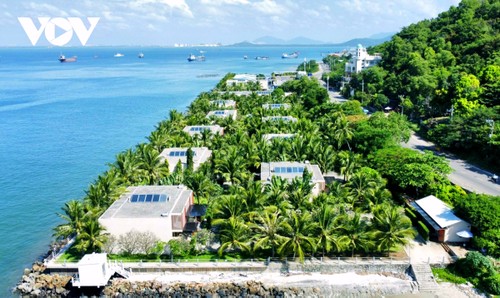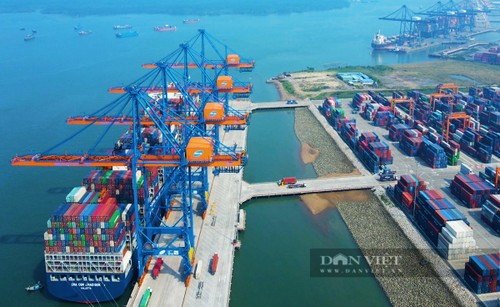 Ba Ria-Vung Tau province has 305km of coastline and lots of other potentials suitable for tourism development. (Photo: Gia Khang/VOV) Ba Ria-Vung Tau province has 305km of coastline and lots of other potentials suitable for tourism development. (Photo: Gia Khang/VOV)
|
In 2018 Vietnam promulgated a strategy for the sustainable development of the marine economy by 2030 with a vision to 2045, which defines the overall goal of making Vietnam a strong maritime country, meeting the criteria for sustainable marine economic development by 2030, and becoming a strong, sustainable, and prosperous marine nation by 2045.
Under the strategy, the marine economy will make a major contribution to the national economy, and Vietnam will participate responsibly in resolving global and regional issues relating to the seas and oceans. Accordingly, Ba Ria-Vung Tau has an extremely important position and role, not only for the Southeast economic region but also for the whole country.
Addressing a conference last month in the province to evaluate the southeastern region’s potential and advantages, Prime Minister Pham Minh Chinh underlined the extremely important position and role of Ba Ria-Vung Tau in the development of the southeastern region and the whole country in regards to national security, society, economy, and culture. “The locality should be proud of its role and outline specific action plans,” said Mr. Chinh.
Ba Ria-Vung Tau has combined sustainable marine economic development and green growth and made the most of all domestic and foreign resources to build an infrastructure that includes a transportation system connecting its seaports with Vietnam’s national highways.
Ba Ria-Vung Tau’s comprehensive road infrastructure includes 3 routes that have been voted some of Vietnam’s most beautiful roads. One of them is a 78-kilometer coastal route that has contributed to the robust growth of the marine economy.
Ba Ria-Vung Tau used to have just a few specialized ports to serve the oil and gas industry and local fishing, but it has turned those into a more general seaport system. The local administration plans to turn the current seaport system into a system of national special-class ports.
 Cai Mep-Thi Vai port cluster (Photo: Nha Man/danviet.vn) Cai Mep-Thi Vai port cluster (Photo: Nha Man/danviet.vn)
|
Pham Viet Thanh, Secretary of the provincial Party Committee, insisted that Cai Mep-Thi Vai port is one of the 20 best potential deep-water ports in the world. In addition, Thanh said, “Developing the marine economy is one of Vietnam’s economic development goals. Pursuant to the Prime Minister’s directive, we’ll clear obstacles and turn the Cai Mep-Thi Vai deep-water port into an international transit port.”
The total volume of cargo handled through the local seaport system grows approximately 10% per year. Cai Mep-Thi Vai is the only port cluster in Vietnam that accommodates container ships bound for Europe and America without transshipment through a third country. Its direct ship service to the US has the highest frequency in Southeast Asia.
Tran Thuong Chi, Director of the provincial Department of Transport, said as Cai Mep-Thi Vai, with modern facilities, is the only port cluster in Vietnam that can accommodate container ships of more than 200,000 dead weight tonnage (DWT).
“With the volume of cargo growing continuously over the years, Cai Mep-Thi Vai has been one of the top 50 ports on the Container Port Performance Index since 2019. This has confirmed the position and role of Vietnam's deep-water seaports in the international arena and opened a new direction for Vietnam's seaport industry on its path of development and integration,” said Chi.
Ba Ria-Vung Tau has developed a project to form a free trade zone associated with a deep-water seaport in the Cai Mep Ha area toward establishing a coastal urban-industrial corridor. The transport infrastructure system connecting Cai Mep-Thi Vai port, Long Thanh airport, and large industrial centers in Ho Chi Minh City, Binh Duong, Dong Nai, and neighbouring localities will ensure continuous connections among the Southeastern region, other regions of Vietnam, and other countries.
This infrastructure system and the 300km East-West urban-industrial corridor stretching from Moc Bai in Tay Ninh will make Vietnam competitive with other countries in Southeast Asia and the world, and will help make Ba Ria-Vung Tau a national marine economy center.